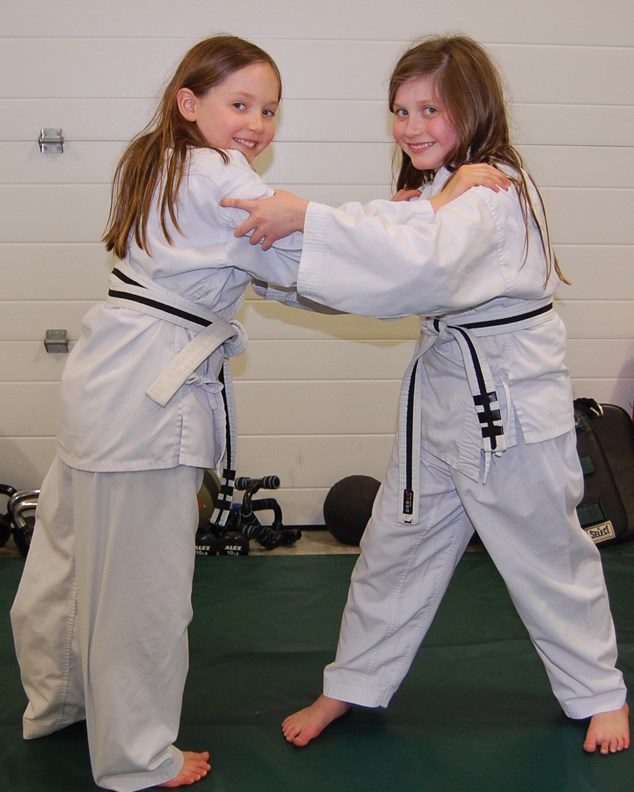School is back in session after the winter holidays, and for some children that could mean a return to bullying.
Scott Ewen, head instructor at Coast Martial Arts in Gibsons, is offering a program to help children deal with bullies – the Gracie Bullyproof system – but school administrators have strong reservations about this method.
“Our goal with the Gracie Bullyproof program is to build awareness in bullying with kids. We can’t stop bullying, but we can stop kids from being bullied,” Ewen said. “What we do with the kids is we try to build confidence. It’s really the most important thing – being confident in themselves and what they can do.”
Bullyproof is based on a set of five fundamentals: one, avoid the fight at all costs; two, if you’re physically attacked, you have to defend yourself; and three, if you’re verbally attacked, you follow the three T’s.
“Talk, tell, tackle,” Ewen explained. “Talk to the bully in a strong voice, tell them to leave you alone. Immediately after that, go and tell somebody – a parent, a teacher, a supervisor, a principal. Most important is telling your parents. I encourage the kids to talk to their parents as much as possible.
Then tackle. Ewen said that when a bullied kid returns to school, their bully will more than likely continue to bully them. So at that point, tackle. Then tell the bully again to leave you alone.
Patrick Bocking, superintendent of schools at School District 46 (SD46), said he can get on board with the first two T’s, but he draws the line at tackling.
“We would never encourage students to tackle each other to deal with a bullying issue,” Bocking said. “We would never support that. Any time you tackle someone, that’s obviously an aggressive act and that’s not how we would work with students to deal with their conflicts.”
The other two fundamentals of the Bullyproof program are never punch or kick a bully – Ewen said that this brings you down to the level of a bully – and use minimal force when applying a submission (tackling).
“Nine times out of 10, with our kids that have had to tackle, the bully ends up crying and running to the principal and saying that this student fought them or hurt them,” Ewen said.
He added that they have run into some disagreement with school officials over the Bullyproof program.
“Some of the principals aren’t too happy with us because some of our kids have tackled kids in their school,” Ewen said. “We explain this to [the kids], that the principals aren’t going to be too stoked about it – and the teachers might not be happy about it – but because you’ve told your parents, they’re your ultimate backup. It doesn’t matter what happens at the end of the day as long as your parents are there, backing you up.”
Bocking suggested the Restorative Justice Program as an alternative option for dealing with bullies on the Coast. According to the Sunshine Coast RCMP website, Restorative Justice aims to “maximize social justice for victims, offenders and the community and to minimize further harm caused by the offending behaviour.”
The RCMP website also states, “results show that offenders participating in restorative practices are less likely to re-offend, building stronger, safer communities.”
Restorative Justice is run by a board of representatives from SD46, the RCMP and the wider community. Bocking described it as a teaching process where the bully is helped to understand the harm that has been caused.
“The results of that kind of process – a good, in-depth process – is that the bullying stops,” Bocking said. “Those people who are labelled as bullies have a deeper understanding of their behaviour. They’re able to move forward and not spend a lifetime being a bully.
“We believe in caring support. We know that bullies are in a fragile place themselves and they need support. Tackling them – we wouldn’t see as a solution,” Bocking said.
According to a study done by the University of British Columbia in 1999, 64 per cent of kids between grades 8 and 10 were bullied, with 12 per cent of incidents occurring on a weekly basis.
However, Ewen said, a lot of bullying goes unreported.
The Bullyproof webpage, www.coastmartialarts.com/gracie-bullyproof, states, “Every day throughout North America, thousands of children miss school due to fear or intimidation of bullies. In fact, many believe that fear of bullying may be the leading cause of low self-confidence in children. Worse, statistics suggest that less than 15 per cent of kids actually report acts of bullying.”
According to the website www.stopabully.ca, there were 524 reports of bullying across Canada between 2009 and 2014, with 22 per cent of these occurring in B.C. – just one per cent behind Quebec, which led the polls.
Coast Martial Arts offers classes for three different age groups: the Little Champs ages four to seven, the Junior Grapplers ages six to nine, and the Grapplers Youth Class for ages 9 to 13.
“They just love that class. We get into advanced Jiu-Jitsu that we can’t even really teach the older, adult class because their minds are a little bit slower to wrap around the techniques,” Ewen said. “Whereas these kids, you can show them something and within five minutes they’ve got it. Their brains are like sponges. It’s probably my favourite class.”
Coast Martial Arts is located in Upper Gibsons. For more information, see their website at www.coastmartialarts.com



